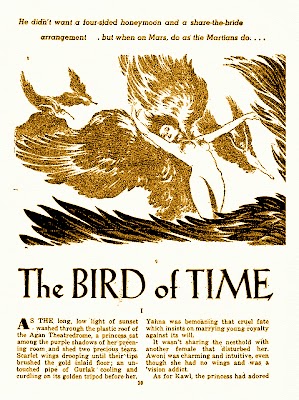IX
“But come with old Khayyám
and leave the Lot
Of Kaikobád and Kaikhosrú
forgot:
Let Rustum lay about him as
he will,
Or
Hátim Tai cry Supper – heed them not.”*
Thanks
to the enthusiasm of the Americans, the Rubaiyat
would probably not have been picked up by British publishers quite so
enthusiastically after it had wandered out of copyright. Without America’s
wholesale pirating of FitzGerald’s translation, its prominence in the public
eye – already waning from its status as a nine-day’s wonder, provoked by the
Pre-Raphaelites – would most likely have dwindled away to almost nothing.
However, late-Victorian and Edwardian England was intrigued by the brashness of
American ways and they kept their collective ears to the ground concerning
whatever was causing a stir across the Pond.
Literature
in Europe was becoming an embittered territory: Tennyson, so beloved by
Victoria, stood as a symbol of the outmoded and unfashionable; Realist
literature, serialised adventure and romance in weekly periodicals, the
Victorian triple-decker, were hide-bound formats that no longer provoked the literati. In France, the Symbolists and
the Decadents were coming to the fore and, in the form of Oscar Wilde, were
making scandalous in-roads into England. The violent, anti-establishment
hedonism of Rimbaud and Baudelaire were beyond the pale of many British
readers; however, the dreamy exoticism of FitzGerald’s translation of Omar
Khayyam – with its upbeat sentiment – allowed many readers to walk on the wild
side without the risk of public censure, or the possibility of having to wallow
in the dubious mires of the French enfants
terribles.
So
the Rubaiyat was not only ‘edgy’, in
that its exotic settings evoked the dangerous excesses of the Symbolist and
Decadent literature of the time, it was also fashionable with the American
‘cool kids’. But there was something else that the Americans did which would
send the Rubaiyat into the upper
stratosphere of popularity.
We’ve
seen an example, in Edmund Dulac’s work, of how well text and image come
together in the context of the Rubaiyat;
it seems like a perfect marriage of style and substance and there’s no doubt, it
is. However, amazing as it might sound to us, it wasn’t an obvious leap. It
took an American publisher taking a gamble on a little-known American artist,
to come up with the concept of illustrating the poem.
Elihu
Vedder Jr. (1836-1923) was born in New York City, the son of a well-to-do
dentist. He decided early on that life as an artist was what he wanted and his
mother supported him in this regard; his father obviously had other ideas, and
Elihu Jr. was cut off financially after swanning about Italy in his youth with
various bohemian colleagues. It didn’t help that his brother became a
respectable navy doctor and dealt diplomatically with Japan during that
country’s emergence from Imperial solitude: the comparison was always going to
work against him.
Vedder
had close associations with the French Symbolists and with the British
Pre-Raphaelites; his style of art pre-figured the Art Nouveau and clicked with
the mysterious iconic images of the Decadents. In the 1880s the Houghton-Mifflin
publishing house commissioned him to illustrate their (pirated) copy of the Rubaiyat, probably at his own
insistence. Vedder produced 56 images to accompany FitzGerald’s translation and
the book was released in a limited edition of only 100 copies in 1884. It was
first offered for sale in Boston on November the 8th of that year and
sold out completely in just six days, prompting successive, less sumptuous,
editions to follow. The collection of images has been hailed as “a masterwork
of American art”, and two travelling exhibitions have recently been held – in
1998 and 2008 – by the Smithsonian American Art Museum to showcase them.
Vedder’s
impoverished life changed forever after the publication and he moved to Italy,
his spiritual home, and remained there, with only sporadic visits to the US,
until his death in 1923. By then his impact had been felt: the concept of the
illustrated poem, of the Gift Book and other similar publications, had really
taken off and the Golden Age of Illustration had peaked and was on the wane.
Without Vedder, we probably would not have the gorgeously illustrated versions
of the Rubaiyat that proliferated in
his wake; and certainly not the bejewelled and gilded versions that were to
come next...
*“Rustum the ‘Hercules’ of
Persia, and Zál his father...”
(EFG)
Hátim
Tai was a philanthropist, famous for his generosity. FitzGerald’s inclusion of
figures from Persian history was part of his aim of preserving oriental forms
for poetic effect. In some respects he thought it ‘better to be orientally
obscure than Europeanly [sic.]
clear.’





















